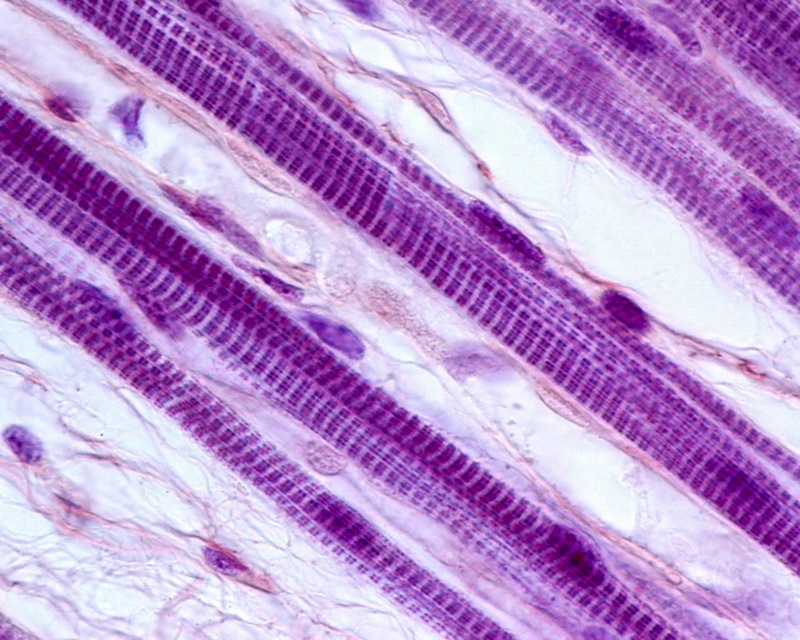Muscle Tissue Could Make Robots More Lifelike

A robot powered by muscle tissue could improve how engineers design future robots for disaster-relief operations, exploration or construction, new research finds.
The 3D-printed "bio-bot," created by researchers at the University of Illinois at Urbana-Champaign, has more precise control over its movements and a more dramatic range of motion, so it can navigate and change its movement in response to its environment. The rectangular robot measures about 0.2 inches (6 millimeters) long, and is constructed from a flexible, jelly-type material and fitted with two strips of engineered muscle tissue on either end.
This type of skeletal muscle tissue could eventually replace conventional motors in robots, said Carmel Majidi, a robotics professor at Carnegie Mellon University in Pittsburgh, who is not involved in the study. [The 6 Strangest Robots Ever Created]
"It could create an artificial muscle for limbs in a soft robot — like an artificial jellyfish or octopus — which can be used in search-and-rescue operations, underwater explorations, natural disaster relief — any scenario where we need a robot to squeeze into tight spaces," Majidi told Live Science. "Basically, you want a robot that's more lifelike."
Skeletal muscle tissue is what drives human movement. It covers the bones and is attached by springy tendons that we can consciously control. When we contract skeletal muscles in certain parts of the body, we move — whether it's a thigh while running or a slight twitch of the finger.
The researchers integrated skeletal muscle tissue engineered from a mouse cell line into a 3D-printed soft robot. Soft robots— a type of robot in bio-engineering inspired by the strong yet stretchy structure of starfish — is made from flexible rather than rigid material, allowing it to move and adapt in new environments.
By integrating skeletal tissue into a soft robot, the researchers created a machine that can carry out more complex motor tasks and is capable of freer and more dynamic motion. The new soft robots would be lightweight, bio-compatible and match the elastic properties of natural muscle tissue, the researchers said.
Sign up for the Live Science daily newsletter now
Get the world’s most fascinating discoveries delivered straight to your inbox.
When the scientists tested the robot's movement, they found that the bio-bot moved only when given an electric shock — giving operators more control over its movement compared to previous bio-bots engineered with cardiac tissue. Robots with cardiac tissue twitch continuously, making it difficult to control their movements, according to the researchers.
If humans can control the robots to move only when they desire them to, that robot would thrive even better in sensitive or unpredictable work scenarios. These bots could potentially mimic the way our bodies move in response to our changing environments — whether it's dodging a taxi or moving into our downward dog yoga pose.
In the study, the researchers write that "cell-based soft robotic devices could transform our ability to design machines and systems that can dynamically sense and respond to a range of complex environmental signals."
Majidi said this type of integration of biological tissue with robotics could potentially lead to improving the design of prosthetic limbs, but such a feat is still far off into the future. "This is still early work and the potential advantages are speculative based on our current practical understanding/experiences," Majidi said. "There's much that remains to be done in tissue engineering and materials integration to have truly untethered and autonomous soft biohybrid robots."
Currently, DARPA has expressed interest in soft robots for a variety of military uses, including for its Maximum Mobility and Manipulation (M3) program launched in 2011, which is designing robots to assist warfighters on the ground.
Follow Jillian Rose Lim @jillroselim& Google+. Follow us @livescience, Facebook & Google+. Original article on Live Science.









